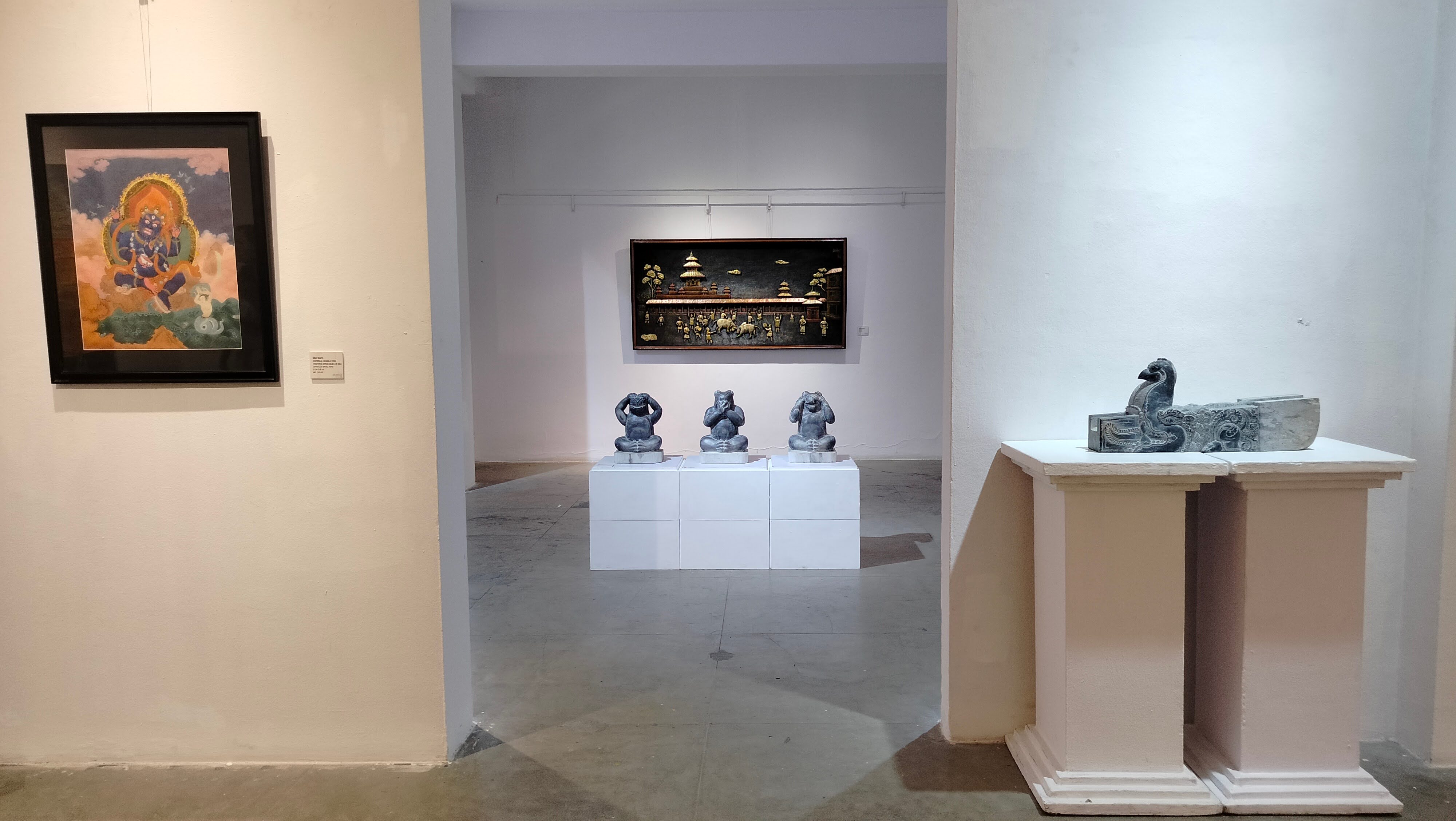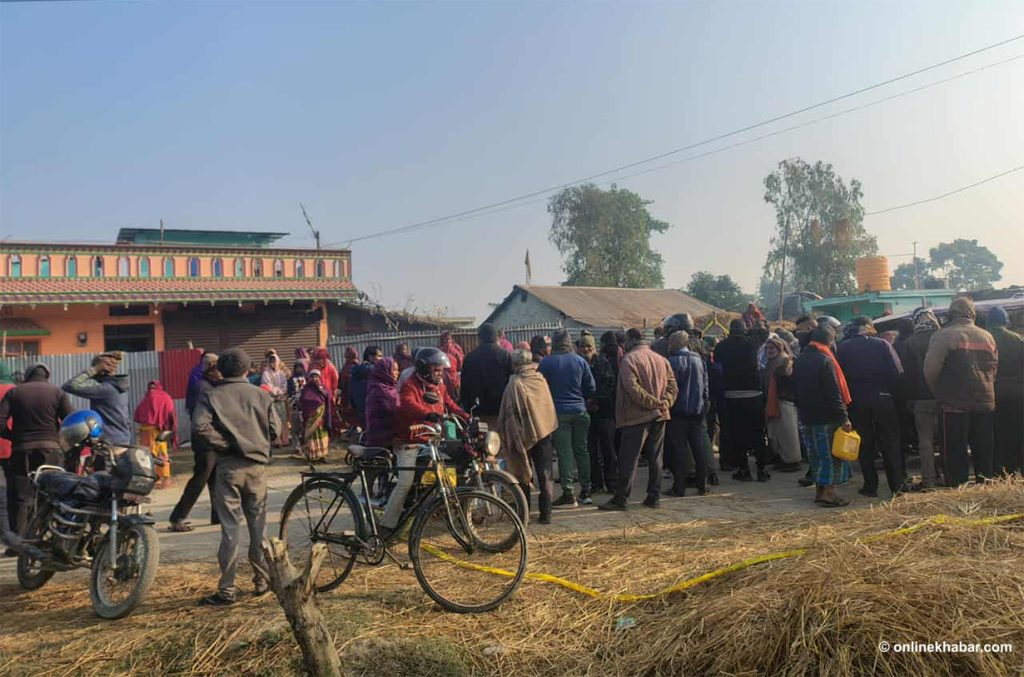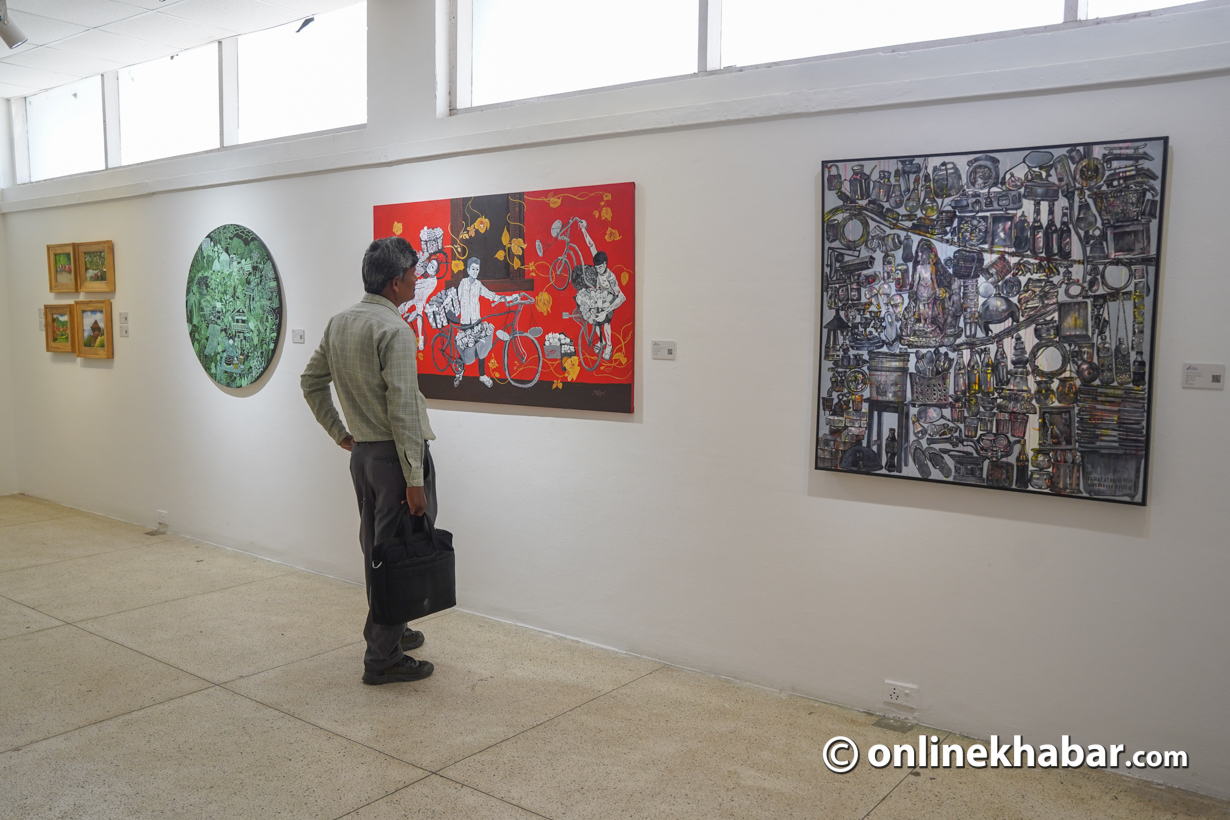
Every year, the Himalayan Art Festival presents something unique to its audience. The sixth edition of the festival that kicked off on August 24 at Nepal Art Council was artistically curated which has made the exhibition visually vibrant.
This year’s festival, organised by E-Arts Nepal, has been curated by artist and curator Pratima Thakali. Thakali recently curated a retrospective art exhibition of veteran artist Ragini Upadhaya Grela.
The exhibition’s curatorial approach has resulted in the artworks on display being presented within captivating themes and sections, transforming the event into a dynamic and vibrant art festival.
Featuring a collection of 150 artworks created by 80 artists, the exhibition showcases an extensive array of artistic forms, including paintings, paubha, sculptures, installations, printmaking, and ceramics. Similarly, the festival also includes a retrospective exhibition honouring the esteemed veteran artist Prof Govinda Narayan ‘Jya-poo’. This tribute to the maestro marks the festival’s latest expansion since the previous year when veteran artist Hari Prasad Sharma was celebrated and honoured in 2022.
The festival
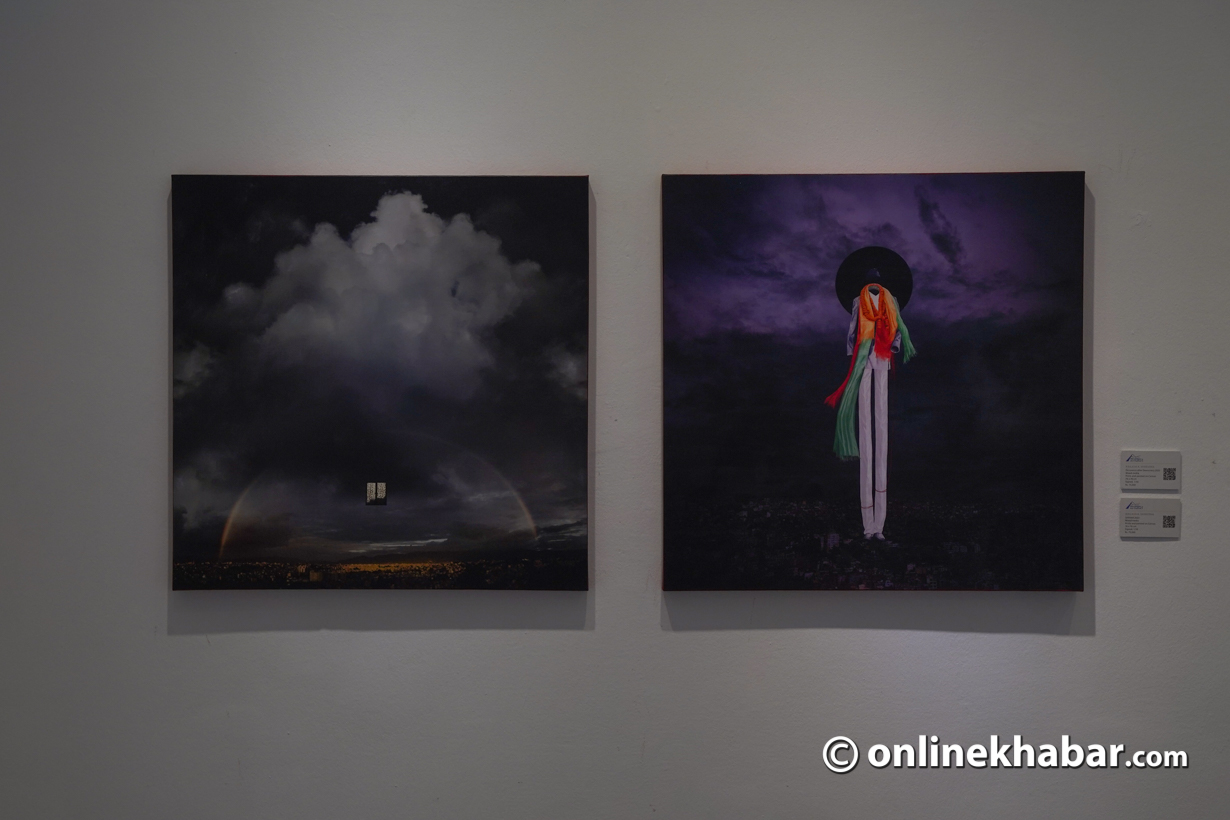
The Himalayan Art Festival 2023 has aimed to raise awareness about the current scenario of art in Nepal. Along with that, the festival allows visitors to understand the evolution of Nepali art and its artists. By showcasing artworks from both senior and young Nepali artists, the event offers a comprehensive view of the art’s journey through different generations.
“Through this festival, we are also encouraging Nepali investors to invest in art,” says artist and one of the organisers, Asha Dangol.
He says art is quite discarded in Nepal as there is hardly any Nepali art during fairs that take place during Dashain or any other festival.
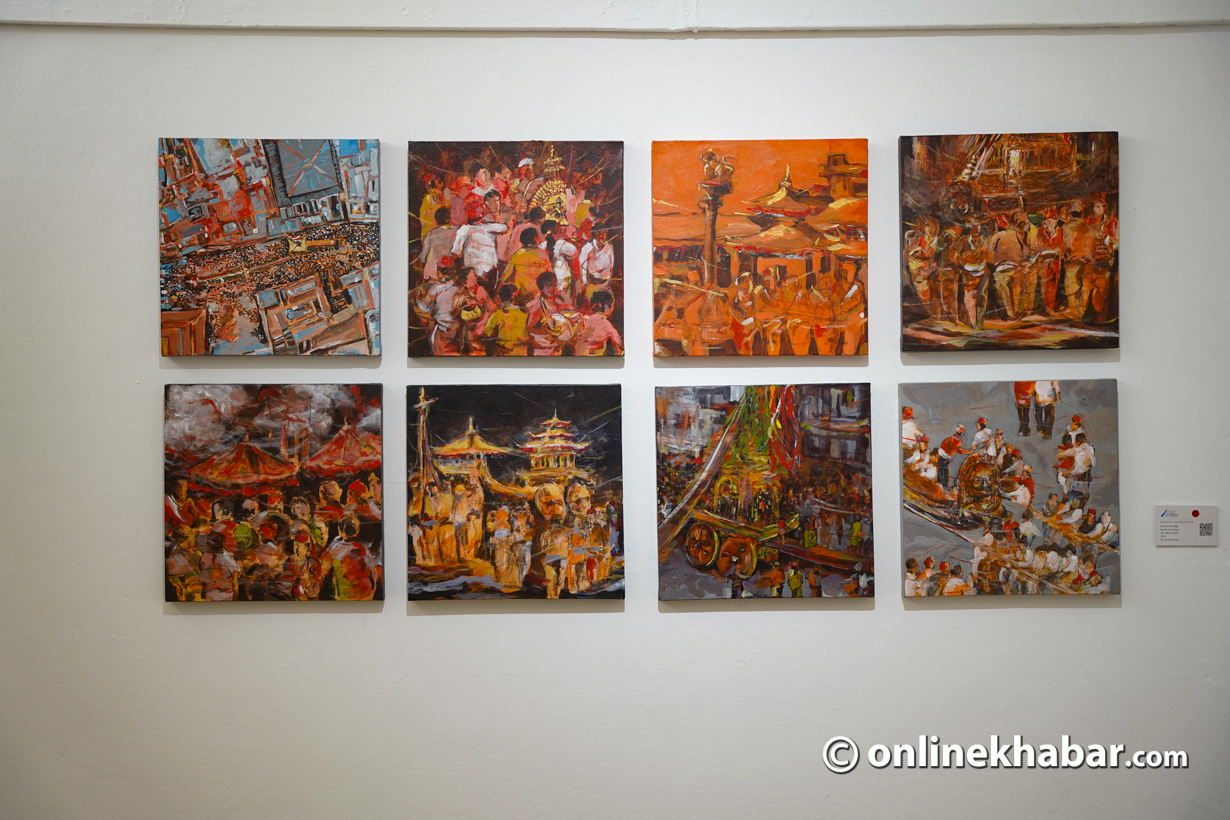
“Given this circumstance, we have taken the initiative to organise a festival that aligns with contemporary trends and aims to uplift Nepali artists,” says Dangol. “Our goal for this festival is to encourage people to celebrate Dashain by purchasing and adorning their homes with Nepali artworks.”
E-Arts Nepal extended invitations to all the participating artists for the festival, and this year, the selection process focused solely on artworks produced since 2020. This conscious choice ensures that attendees of the festival, especially those who frequent the exhibition, will have the opportunity to experience new and recently created artworks by these artists.
The festival displays artworks by a diverse array of artists, including Jasmine Rajbhandari, Jeevan Rajopadhyay, Ishan Pariyar, Kiran Manandhar, Kapil Mani Dixit, Krishna Gopal Shrestha, Krishna Manandhar, Madan Chitrakar, Laya Mainali, Manish Lal Shrestha, Navindra Man Rajbhandari, Roshan Mishra, Roshan Pradhan, Sabita Dangol, Sagar Manandhar, Samjhana Rajbhandari, Sarita Dongol, Sauganga Darshandhari, Prithivi Shrestha and others.
Moreover, the festival also includes a guided tour, art talk/panel discussion and more.
Symbols and metaphors come alive
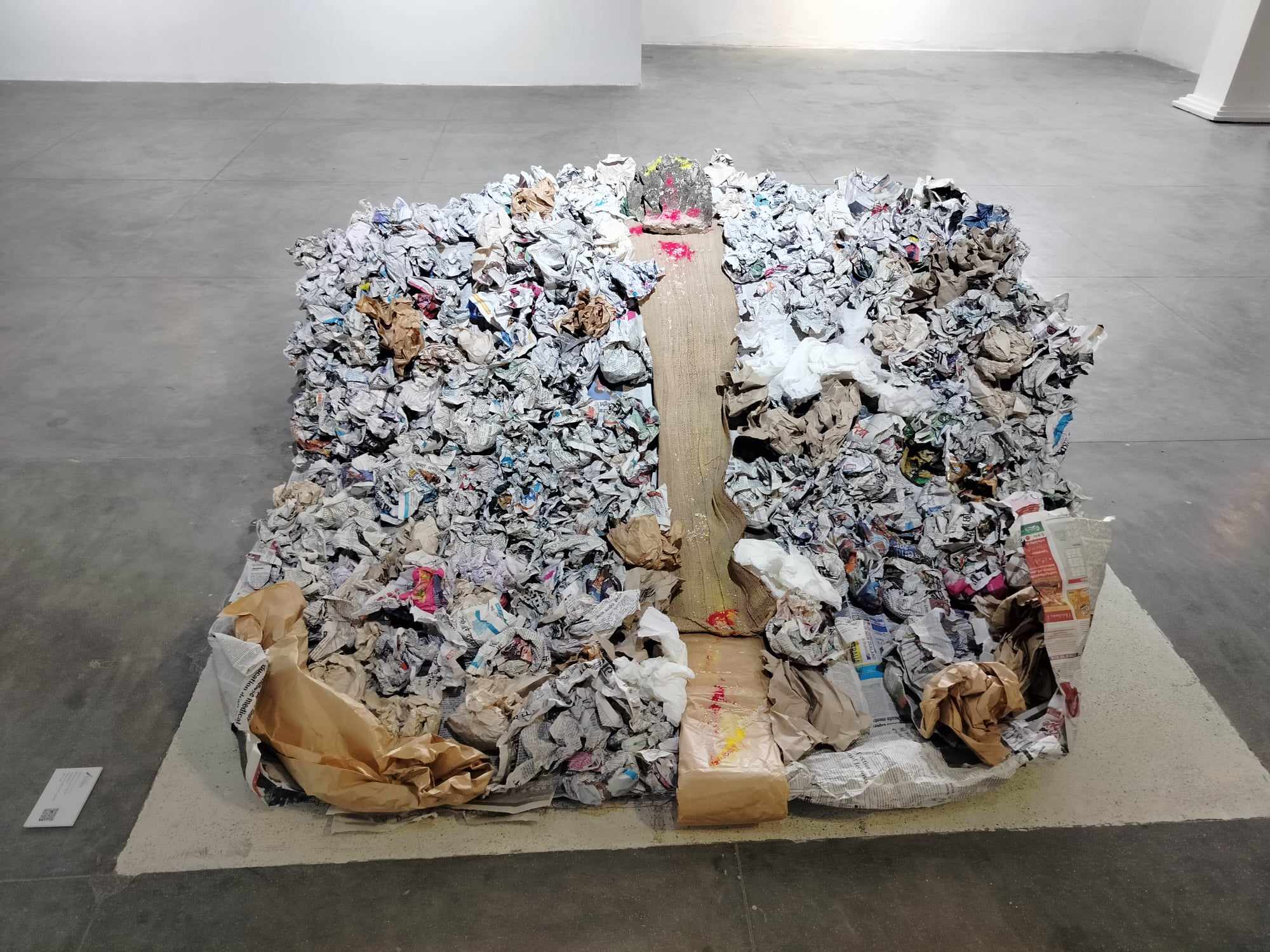
Jupiter Pradhan’s installation titled ‘Scattered Pieces’ uses ceramic masks, shovels, ceramic hands, stones, and dried leaves. This artwork symbolises the continuous process of slicing and fragmentation of diverse voices subjected to the ruthless chopping board of religious, cultural and societal influences.
“Through the use of various materials, I seek to portray the profound impact of external forces on individual identities,” he says.
Through the installation, Pradhan has captured the cruel suppression of voices that cry for freedom and self-existence that tears Nepali into pieces.
“It serves as a poignant reminder of the struggles we all face in the face of overwhelming power and manipulation.”

Likewise, another installation by artist Roshan Mishra titled ‘Who owns our culture?’, uses paper and wire mesh and plaster.
“Using crumpled papers as a metaphor, I’m referring to various cultures and have made a huge blanket to illustrate how a culture sits as one of the most potent aspects on top of a historical layer,” he says.
In the installation, the crumpled paper balls signify respect and recognise to ethnic groups and indigenous people who practice and preserve Nepal’s tangible and intangible culture, materials, tradition, faith and beliefs.
“A book by Geoffrey Robertson titled— Who Owns History?— inspired me to think about the cultural mobilisation and possible reformation of our society through a cultural lens,” says Mishra.
Then using the printmaking technique, of etching, printmaker Bidhya Man Tamang in ‘Foraging for Food’ symbolically presents the important connection between farming and the environment. He has used symbols like frogs, cats, and mice to represent different aspects of this relationship.
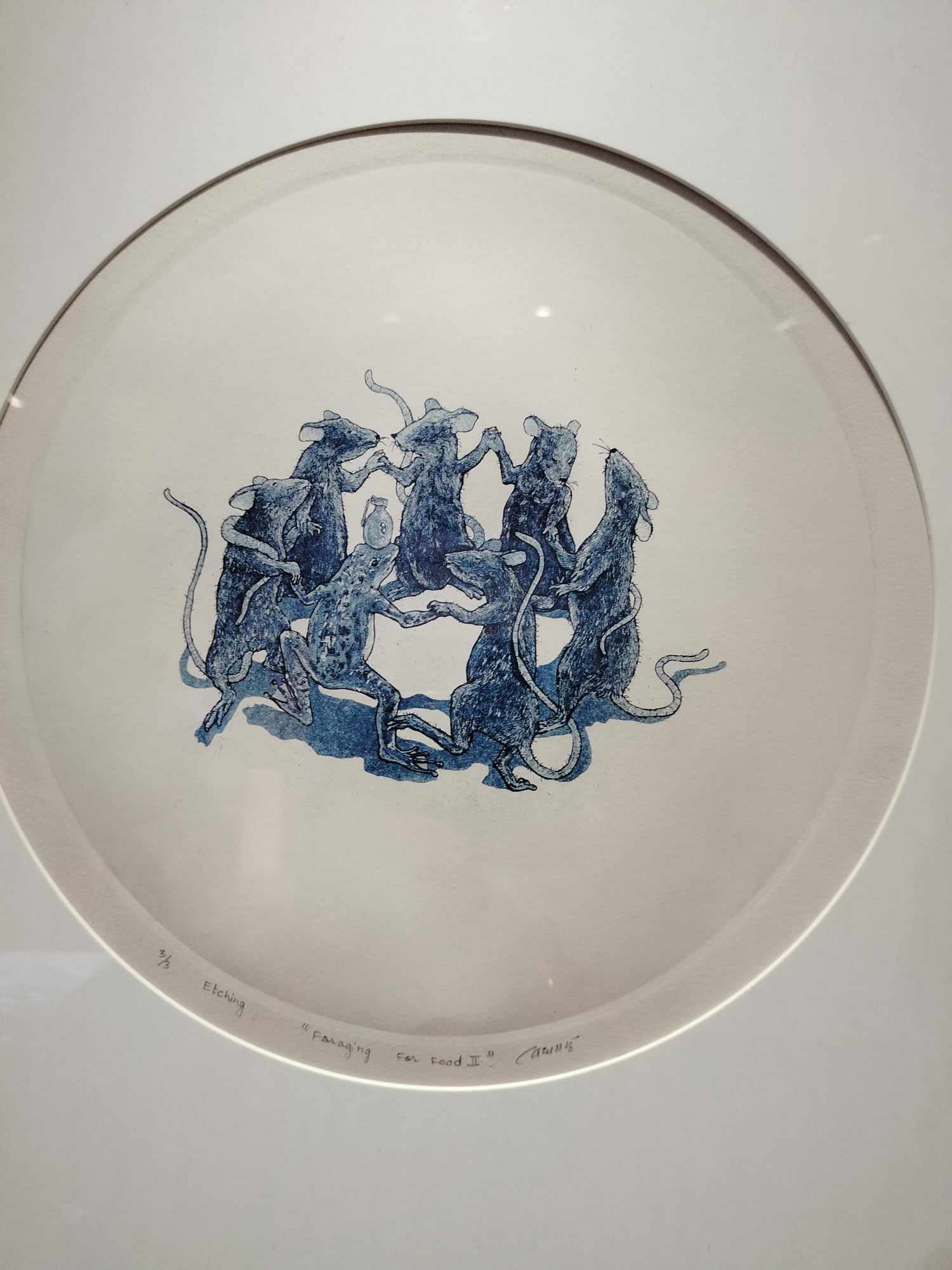
“The frog represents the farmer, showing how they can work together with nature to keep pests under control,” he says. “The cat stands for the people who make the rules about farming and the mouse represents the government. My artwork asks everyone to work together. Let’s protect frogs and the balance they bring to farming.”
The festival spreads around the ground floor and the first floor of the council. The gallery at the right-hand side from the entrance showcases modern artworks that deal with the theme of expressing oneself, social and cultural context, landscapes, ceramic work and more.
On the left of the gallery, visitors will encounter paintings that beautifully capture the urban landscape of the Kathmandu valley. The artist’s primary focus revolves around integrating temples, shrines, and idols as central motifs within the artwork. This section is complemented by the inclusion of paubha paintings, enhancing the thematic richness of the exhibition.
On the first floor, if you move clockwise, mythical begins such as Chhepu, Makar, Garud and more have been displayed and as you move forward installations on socio-political context, religious and more are seen. Then at the end part of the exhibition, the retrospective exhibition of Maestro Jya-poo along with the timeline of his work and a video is placed.
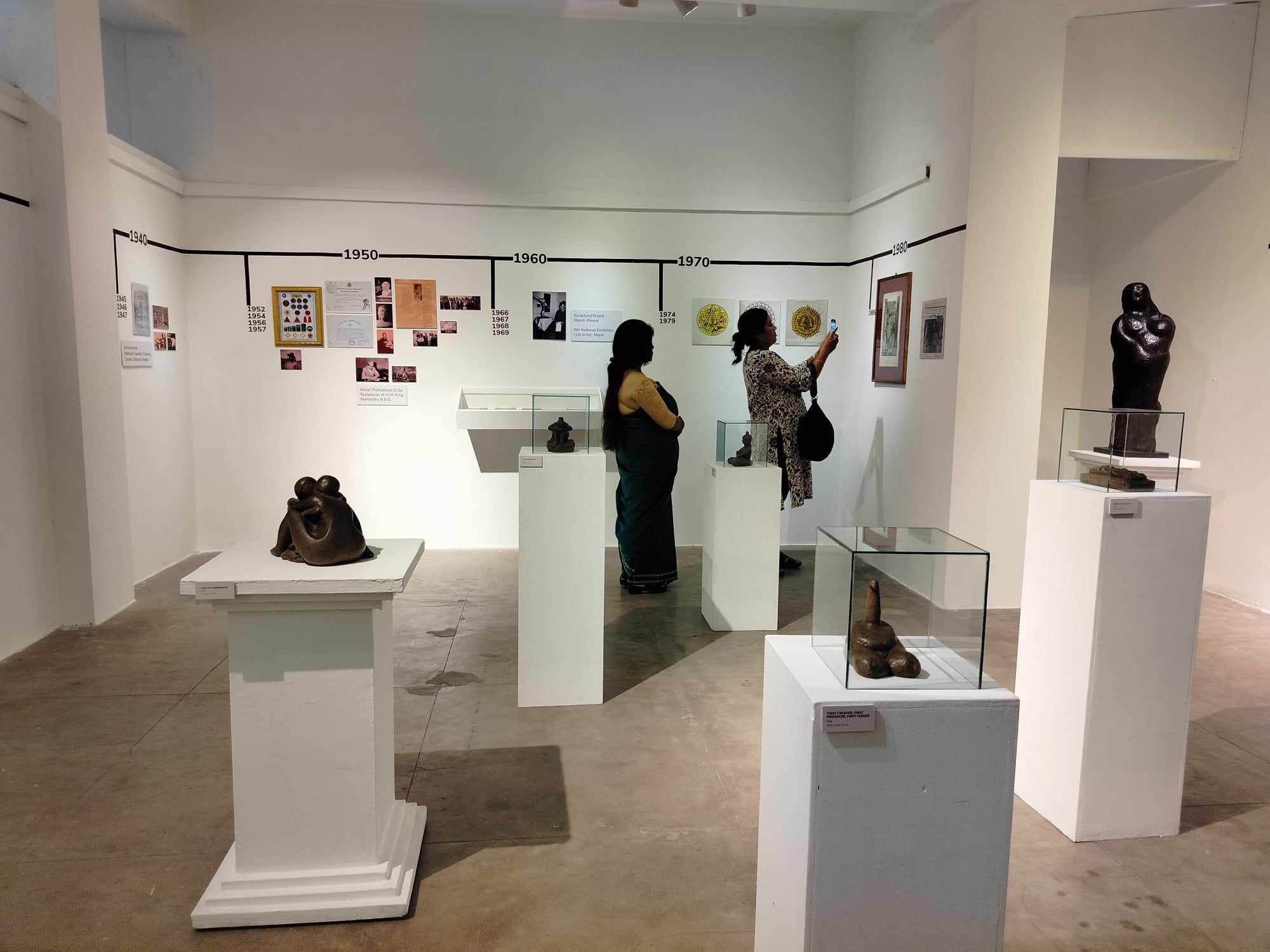
Furthermore, for those who may not be able to afford the paintings but still wish to own a piece of artwork, there’s an option to purchase tote bags and water bottles featuring prints of the artwork.
The exhibition continues till August 30.





